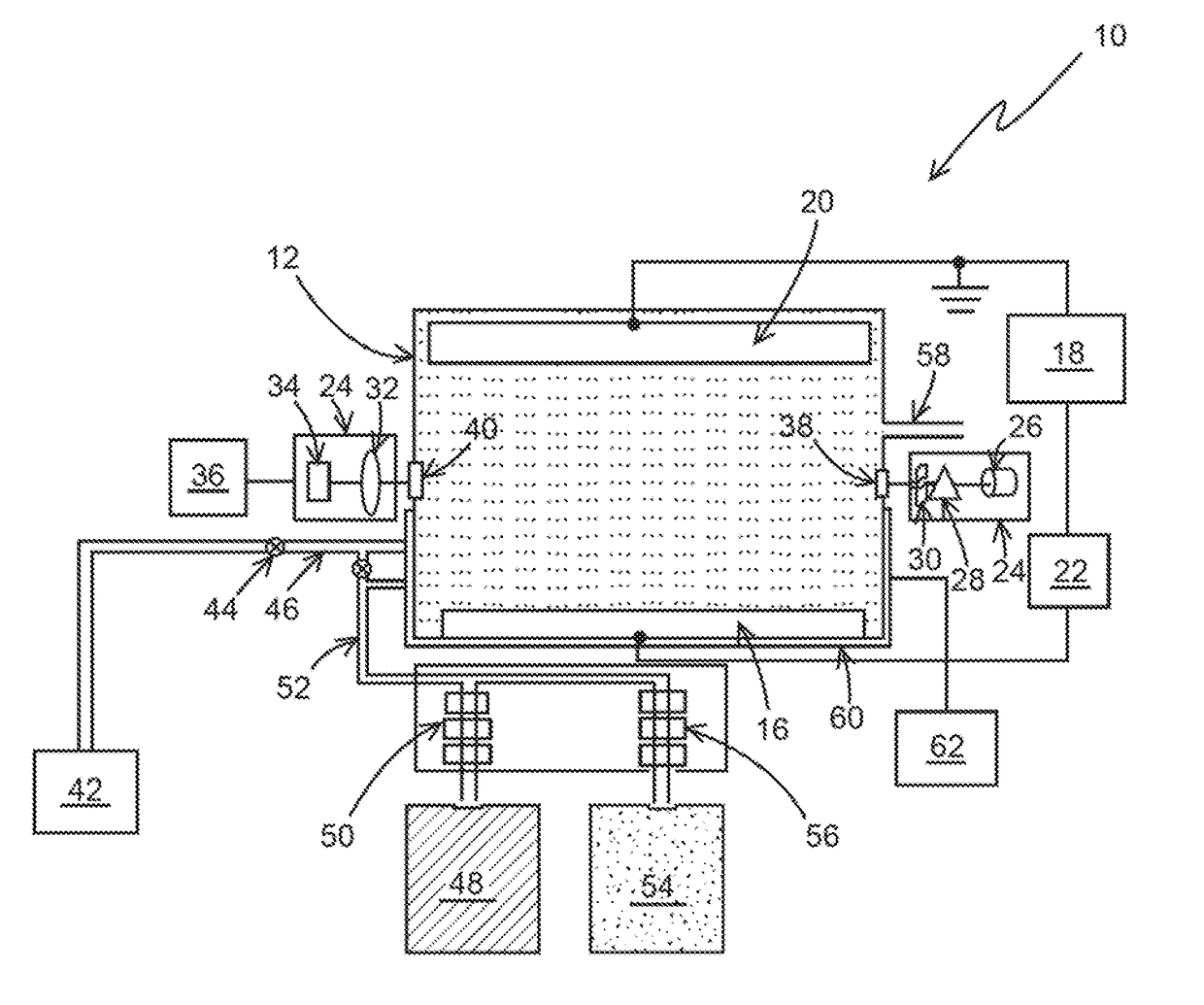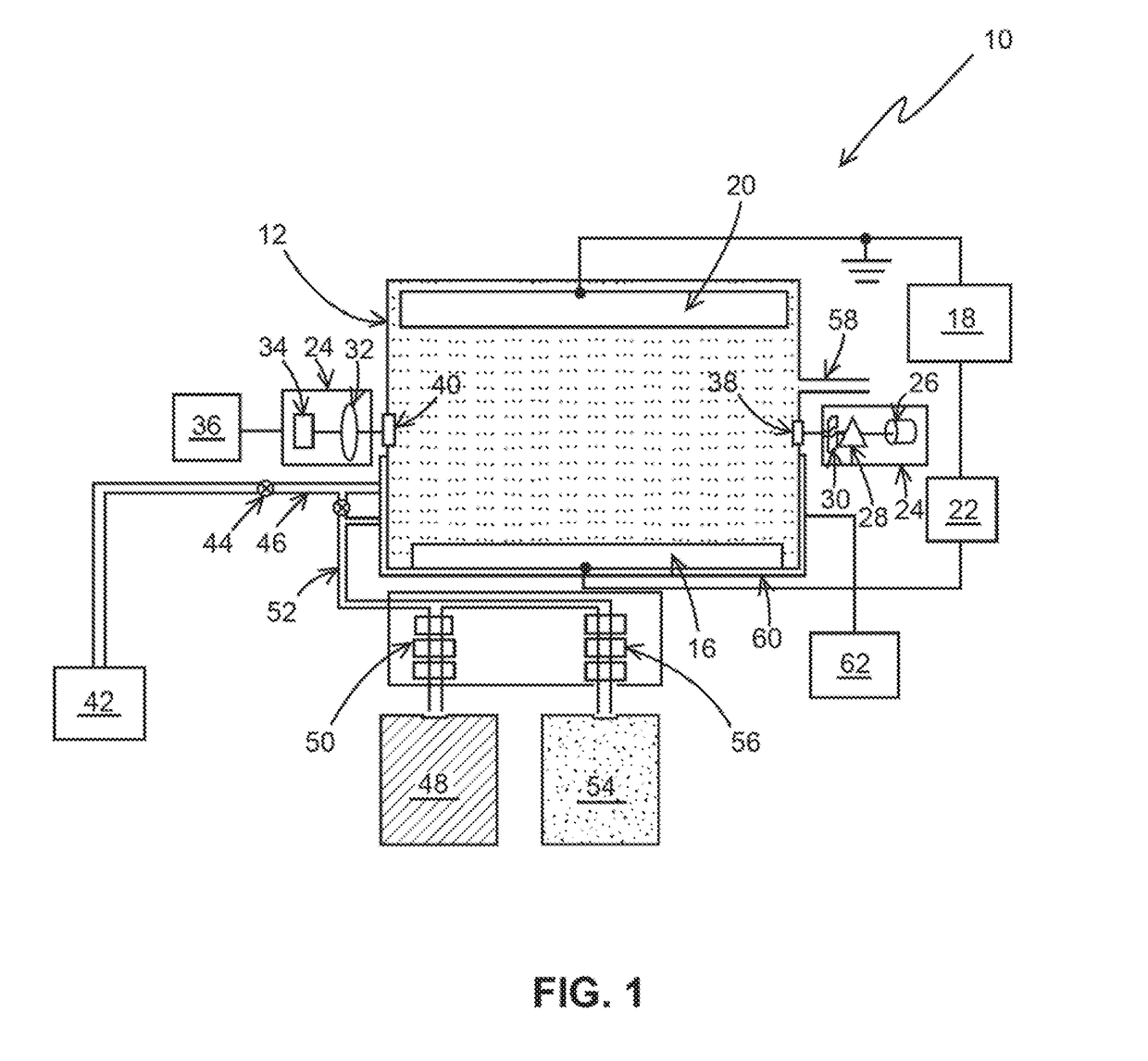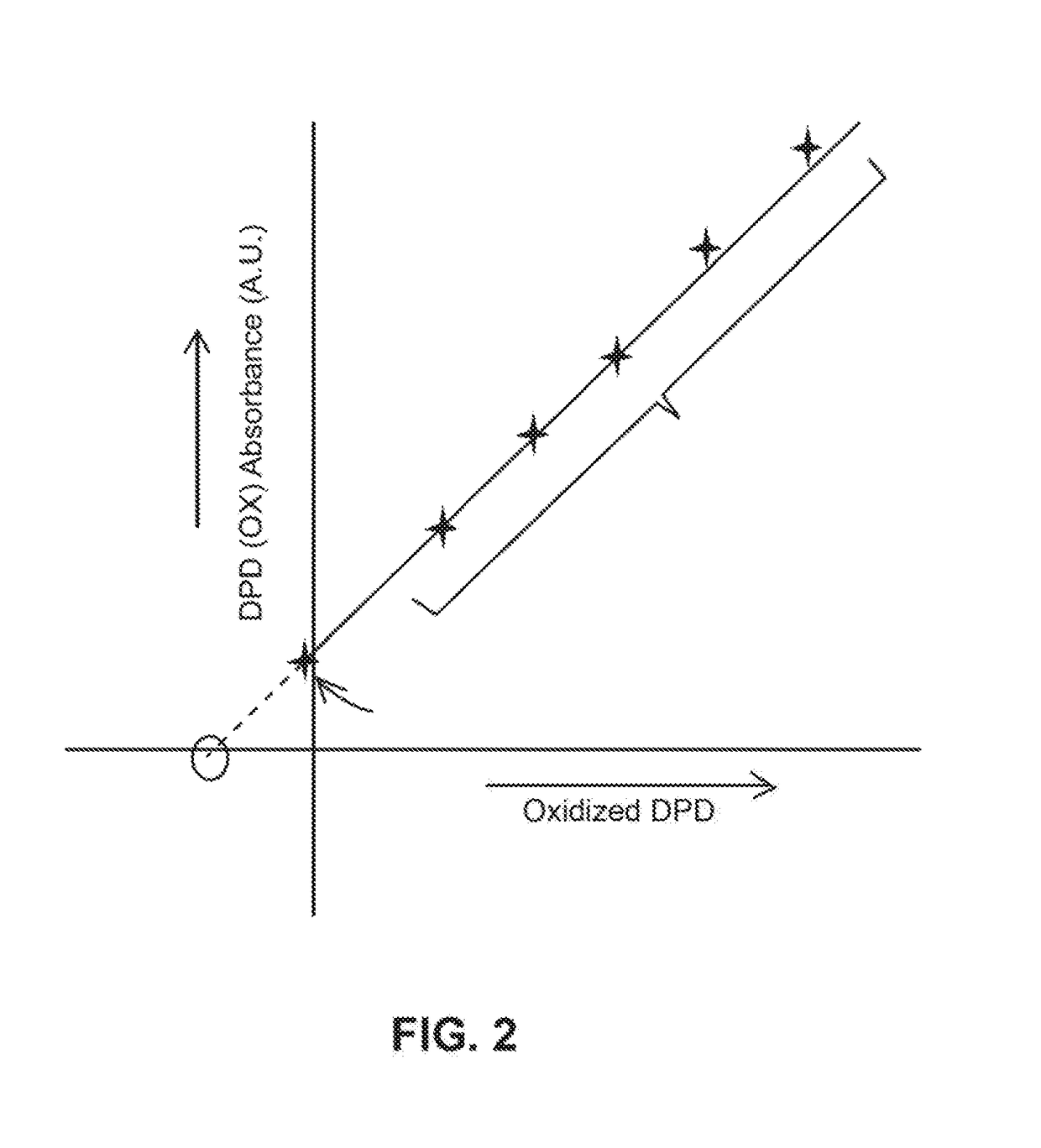Determination of analytes using electrochemically active indicator species as reactants
- Summary
- Abstract
- Description
- Claims
- Application Information
AI Technical Summary
Benefits of technology
Problems solved by technology
Method used
Image
Examples
example 1
[0033]The following steps may be performed using apparatus 10, as an example, for a typical chlorine determination:[0034]1) N,N-Diethyl-p-phenylenediamine (DPD) was added to a sample solution with a quantity of chlorine.[0035]2) After the DPD reacts with the chlorine a measurement of the chemically oxidized DPD was made by an optical absorption measurement at between 510-530 nm, and more specifically at 515 nm.[0036]3) After the optical determination, additional DPD in the solution is electrochemical oxidized to DPD (Ox) at 0.5 V vs. Ag / AgCl at a Pt electrode for a chosen period of time, for example, 1 min. The charge delivered for this oxidation was recorded. The amount of DPD(Ox) was optically determined as the absorbance unit.[0037]4) Step 3 was repeated a selected number of times, for example, 5 times and the charge and the optical measurement for each repetition is recorded. These repetitions generate the electrochemical standard addition.
[0038]The charge (Q) is determined by i...
example 2
[0040]The following steps may be performed using apparatus 10, as an example for determining the concentration of nitrosoamines using ferrate as an indicator species.
[0041]Step 1. Ferrate (Iron (VI)) is added to the sample solution with an unknown quantity of nitrosamines (for example, N-Nitrosodimethylamine).
[0042]Step 2. After the ferrate reacts with Nitrosoamines, a measurement of the ferrate is made by an optical absorption measurement between 500-550 nm, and more specifically at 505 nm. This absorption of ferrate (Fe (VI)) would decrease (Dx) from its initial value (X) to the chemical oxidation of nitrosamines (X-Dx).
[0043]Step 3. After the optical determination, additional ferrate (Fe (VI)) in the solution is electrochemically reduced to Fe (V) or Fe (IV) or Fe (Ill) or Fe (II) at the appropriate reduction potentials (−0.5, −0.6, −0.7 or −0.8) vs. Ag / Ag Cl at an inert electrode like Pt, Au or solid boron doped diamond for chosen period of time, for example 1-5 minutes. The cha...
example 3
[0045]Low concentrations of aqueous Fe(VI) can be determined by the reaction of Fe (VI) with 2,2′-azino-bis(3-ethylbenzothiazoline-6-sulfonate) (ABTS) using the electrochemical standard addition method by generating an in-situ echem standard addition method. Fe(VI) reacts with 2,2′-azino-bis(3-ethylbenzothiazoline-6-sulfonate) which forms a green colored oxidized (ABTS (Ox)) that can be measured spectrophotometrically at 415 nm. The ABTS can be electrochemically oxidized to green color as per the following reactions:
[0046]ABTS−·+e−→ABTS2−E°′=0.67 V vs SHE
[0047]ABTS+e−→ABTS−·E°′=1.08 V vs SHE
[0048]Thus, after the initial chemical oxidation of ABTS by Fe(VI) the later oxidation of ABTS can be carried out by electrochemical means to generate the standard curve which then can be used to determine low concentrations (typically 0-100 um) ferrate. This can be applied to other oxidant species like oxygen, hydrogen peroxide, higher valent transition metal species like Cr(VI), Mn (VII).
PUM
 Login to View More
Login to View More Abstract
Description
Claims
Application Information
 Login to View More
Login to View More - R&D
- Intellectual Property
- Life Sciences
- Materials
- Tech Scout
- Unparalleled Data Quality
- Higher Quality Content
- 60% Fewer Hallucinations
Browse by: Latest US Patents, China's latest patents, Technical Efficacy Thesaurus, Application Domain, Technology Topic, Popular Technical Reports.
© 2025 PatSnap. All rights reserved.Legal|Privacy policy|Modern Slavery Act Transparency Statement|Sitemap|About US| Contact US: help@patsnap.com



